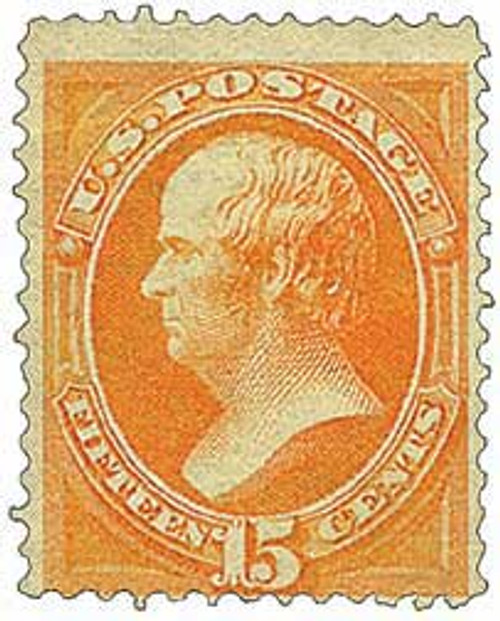
1870-71 1c Franklin, ultramarine
# 145 - 1870-71 1c Franklin, ultramarine
$14.00 - $350.00
U.S. #145
1870-71 1¢ Franklin
National Bank Note Printing
1870-71 1¢ Franklin
National Bank Note Printing
Earliest Known Use: July 7, 1870
Quantity issued: 120,000,000 (estimate)
Printed by: National Bank Note Company
Method: Flat plate
Watermark: None
Perforation: 12
Color: Ultramarine
In 1743, Franklin organized the American Philosophical Society, which became the University of Pennsylvania in 1749. He also developed the first public library, fire company, and insurance company.
Bank Notes 1870-1888
Due to the unpopularity of the 1869 Pictorial series, the Postmaster General found it necessary to issue new stamps. Among the public’s many complaints were that the stamps were too small, unattractive, and of inferior quality. Thus, the new issues were not only larger and better quality, but they also carried new designs. Heads, in profile, of famous deceased Americans were chosen as the new subject matter.
Nicknamed the “Bank Note” stamps, this series was printed by three prominent Bank Note printing companies – the National, Continental, and American Bank Note Companies, in that order. As the contract for printing passed from company to company, so did the dies and plates. Each company printed the stamps with slight variations, and identifying them can be both challenging and complex.
Because the pictorials were to be printed for four years, but were withdrawn from sale after a year, the National Bank Note Company still had three years remaining in their contract. The stamps they printed were produced with and without grills.
In 1873, new bids were submitted and a new contract was awarded to the Continental Bank Note Company. So-called “secret marks” enabled them to distinguish their plates and stamps from earlier ones.
The American Bank Note Company acquired Continental in 1879 and assumed the contract Continental had held. This firm, however, printed the stamps on a soft paper, which has different qualities than the hard paper used by the previous companies.
Color variations, in addition to secret marks and different paper types, are helpful in determining the different varieties. These classic stamps are a truly fascinating area of philately.
U.S. #145
1870-71 1¢ Franklin
National Bank Note Printing
1870-71 1¢ Franklin
National Bank Note Printing
Earliest Known Use: July 7, 1870
Quantity issued: 120,000,000 (estimate)
Printed by: National Bank Note Company
Method: Flat plate
Watermark: None
Perforation: 12
Color: Ultramarine
In 1743, Franklin organized the American Philosophical Society, which became the University of Pennsylvania in 1749. He also developed the first public library, fire company, and insurance company.
Bank Notes 1870-1888
Due to the unpopularity of the 1869 Pictorial series, the Postmaster General found it necessary to issue new stamps. Among the public’s many complaints were that the stamps were too small, unattractive, and of inferior quality. Thus, the new issues were not only larger and better quality, but they also carried new designs. Heads, in profile, of famous deceased Americans were chosen as the new subject matter.
Nicknamed the “Bank Note” stamps, this series was printed by three prominent Bank Note printing companies – the National, Continental, and American Bank Note Companies, in that order. As the contract for printing passed from company to company, so did the dies and plates. Each company printed the stamps with slight variations, and identifying them can be both challenging and complex.
Because the pictorials were to be printed for four years, but were withdrawn from sale after a year, the National Bank Note Company still had three years remaining in their contract. The stamps they printed were produced with and without grills.
In 1873, new bids were submitted and a new contract was awarded to the Continental Bank Note Company. So-called “secret marks” enabled them to distinguish their plates and stamps from earlier ones.
The American Bank Note Company acquired Continental in 1879 and assumed the contract Continental had held. This firm, however, printed the stamps on a soft paper, which has different qualities than the hard paper used by the previous companies.
Color variations, in addition to secret marks and different paper types, are helpful in determining the different varieties. These classic stamps are a truly fascinating area of philately.
















